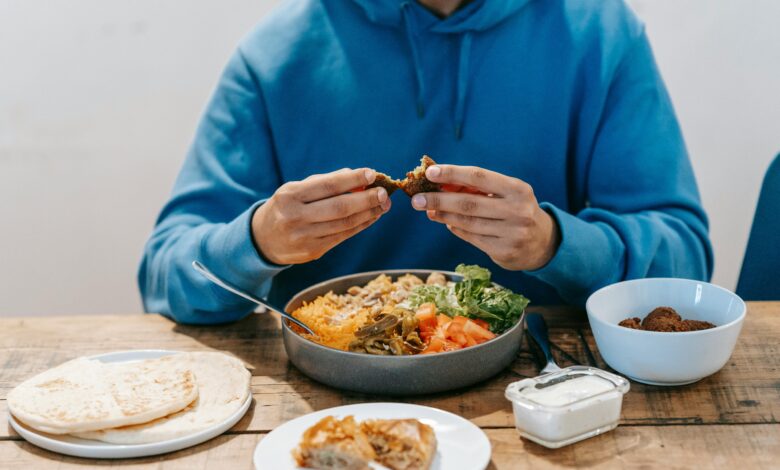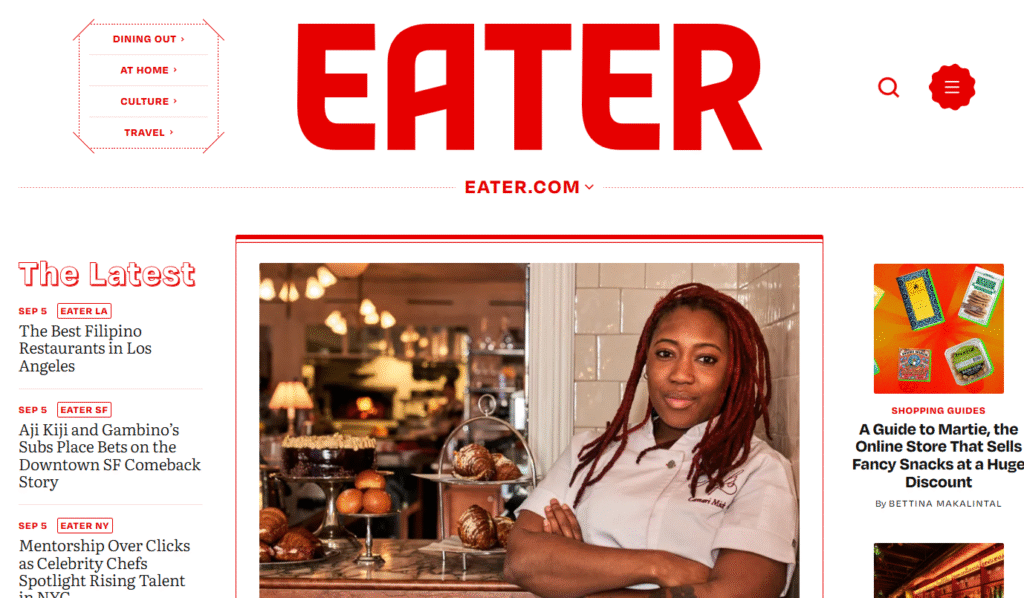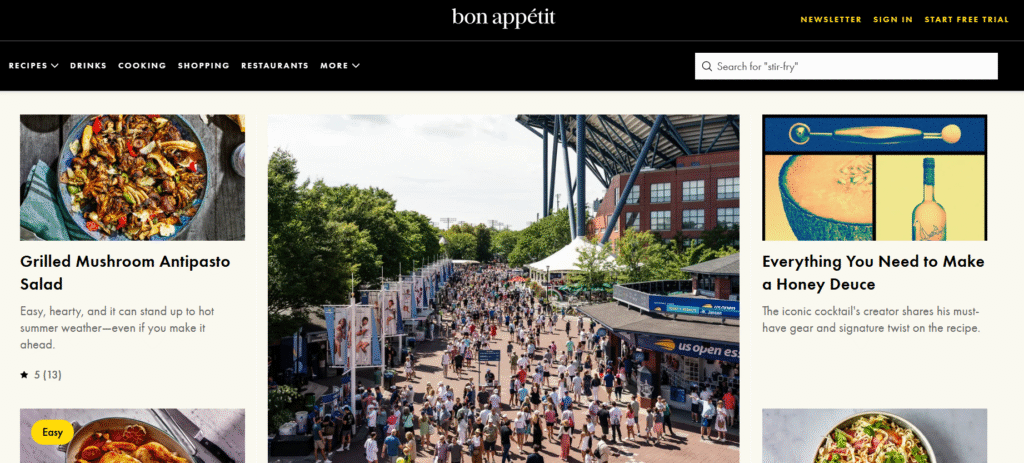How To Become A Food Critic And Get Paid

Ever caught yourself scrolling through restaurant reviews, thinking, “I could totally write better than this”? Well, guess what, you probably can! And more importantly, you can actually make serious money doing it.
Look, I’ve been in the personal finance game for years, and I’ve seen people turn their weirdest passions into legitimate income streams. But becoming a food critic? That’s like getting paid to do what you’re probably already doing on weekends, except now your dinner habits can fund your retirement account.
Here’s the thing most people don’t realize: professional food critics can earn anywhere from $40,000 to $120,000 annually, with top critics at major publications pulling in six figures. Not bad for someone who essentially gets paid to eat, right? 🙂
What Does A Food Critic Do?
Okay, before you start fantasizing about endless free meals, let me break down what food critics actually do. It’s way more than just showing up and chowing down.
Food critics are professional storytellers who evaluate every aspect of a dining experience. They analyze food quality, presentation, service, ambiance, and value for money. Then they translate that experience into compelling content that helps readers make informed dining decisions.
Think about it this way: when you check restaurant reviews before date night, you’re relying on critics to save you from disaster (and potentially your relationship). That’s serious responsibility!
The best critics don’t just describe flavors; they paint pictures with words. They make you taste that perfectly seared scallop or feel the disappointment of soggy fries through their writing. It’s part journalism, part entertainment, and entirely skill-based.
How Much Money Do Food Critics Make?
Here’s where my finance background gets excited, let’s talk numbers!
Staff food critics at major publications typically earn between $50,000-$90,000 annually. But here’s where it gets interesting: freelance critics often out-earn their employed counterparts. Why? Multiple revenue streams, my friend.
Successful independent food critics combine:
- Freelance article payments: $0.10-$2.00 per word (that $2,000 review suddenly looks pretty appetizing)
- Blog monetization: $500-$5,000+ monthly through ads and affiliates
- Social media partnerships: $100-$10,000 per sponsored post
- Book deals and consulting: $5,000-$50,000+ per project
IMO, the smartest critics treat their reputation like a personal brand. They build multiple income streams rather than relying on one employer. It’s basic diversification, something I always preach in personal finance.
Skills Required To Be A Food Critic

Ready for some real talk? Being a food critic isn’t just about having taste buds and opinions. You need legitimate skills that translate into cold, hard cash.
Impressive Writing And Communication Skills
This isn’t negotiable. Your writing is your product, and bad writing kills careers faster than food poisoning kills appetites.
You need to master:
- Descriptive language that makes readers hungry
- Objective analysis that readers trust
- Engaging storytelling that keeps people reading
- Clear communication across multiple platforms
I’ve seen talented writers with mediocre palates outperform amazing cooks who can’t string sentences together. Writing skills pay the bills in this business.
Objectivity
Here’s where many wannabe critics crash and burn. Personal bias kills credibility, and credibility determines your earning potential.
Think of it like investment analysis; emotions make you poor. If a restaurant serves terrible food, you report it honestly, even if the owner is your neighbor. If a hole-in-the-wall serves incredible food, you give credit where it’s due, regardless of the venue’s Instagram-worthiness.
Objective critics build trust, and trusted critics command higher rates. It’s simple economics.
Knowledge Of Different Cuisines
You can’t critique what you don’t understand. Successful food critics are walking encyclopedias of culinary knowledge.
This means studying:
- Regional cooking techniques and traditions
- Ingredient sourcing and seasonal availability
- Cultural context behind dishes
- Current food trends and innovations
The more you know, the more valuable your opinions become. Knowledge literally translates to higher per-word rates and better assignment opportunities.
How To Become A Food Critic In 6 Simple Steps
Alright, let’s get practical. Here’s your step-by-step roadmap to turning your food obsession into a paying career.
1. Get Formal Training
Before you roll your eyes, hear me out. Formal training isn’t about getting permission to have opinions; it’s about building credibility and connections that lead to paying opportunities.
Consider these paths:
- Journalism degree: Teaches research, writing, and media ethics
- Culinary school: Provides technical food knowledge and industry connections
- Food science programs: Offer a deeper understanding of cooking processes
- Communications degree: Develops writing and digital marketing skills
I always tell people to think about education as an investment. The average food critic with formal training earns 30-40% more than self-taught critics. The network you build in school often leads to your first paying gigs.
2. Build Courage And Confidence
This might sound touchy-feely, but confidence directly impacts your earning potential. Confident critics command respect and higher rates.
Restaurants and publications pay premium prices for critics who:
- Deliver honest assessments without backing down
- Handle confrontation professionally when reviews upset establishments
- Maintain authority in their expertise area
Start building confidence by:
- Practicing public speaking at local events
- Joining food-related organizations and networking groups
- Reading industry publications to stay current
- Engaging with other food professionals on social media
Remember, confidence grows with competence. The more you know, the more confident you’ll feel charging what you’re worth.
3. Build Authority And Credibility By Creating Content

Here’s where smart critics separate themselves from food bloggers: they build authentic authority through consistent, quality content.
Start your content empire:
Launch a food blog focusing on your local dining scene. Pick a niche, maybe budget eats under $15, or ethnic cuisines in your city. Niche expertise commands higher prices than general food writing.
Create social media presence across platforms:
- Instagram: Visual storytelling and behind-the-scenes content
- TikTok: Quick reviews and food education
- Twitter: Real-time dining updates and industry commentary
- YouTube: In-depth restaurant visits and cooking analysis
Track your metrics religiously. Publishers pay based on your reach and engagement rates. Document everything: page views, social followers, and email subscribers. This data becomes your rate sheet when negotiating with clients.
4. Grow Your Network And Cultivate Your Skills
Networking in the food industry is like compound interest; small connections grow into major opportunities over time.
Target these key relationships:
- Local chefs and restaurant owners: They become sources and sometimes clients
- Food editors and publishers: They assign paying work
- Other food writers: They share opportunities and referrals
- Food PR professionals: They connect you with restaurants and brands
- Food photographers: Visual content partnerships increase your value
Attend food events religiously:
- Restaurant week celebrations
- Food and wine festivals
- Culinary school graduations
- Industry trade shows
- Food blogger conferences
Pro tip from my finance background: Always follow up within 48 hours of meeting someone. Most people don’t, so you’ll stand out immediately.
5. Take A Writing Internship
Here’s some tough love: most food enthusiasts think they can write, but most can’t write professionally. An internship bridges that gap between passion and paycheck.
Look for internships at:
- Local newspapers with food sections
- Food magazines (many offer remote internships)
- Food websites and blogs need content support
- Restaurant marketing companies are writing promotional content
- Food PR agencies crafting press releases and reviews
Even unpaid internships provide massive ROI through skills and connections. I’ve seen interns land $50,000 positions within six months of completing programs.
If formal internships aren’t available, create your own. Offer to write free content for local restaurants in exchange for experience and portfolio pieces. Just make sure you set clear boundaries, free work should have defined limits and specific goals.
6. Write Independently
This is where the real money lives, folks. Independent food critics have unlimited earning potential because they control their rates, clients, and workload.
Freelance opportunities include:
- Restaurant review assignments: $200-$2,000 per review
- Food trend articles: $500-$5,000 per piece
- Travel and dining guides: $1,000-$10,000 per project
- Brand partnerships: $500-$50,000, depending on your audience
- Cookbook reviews: $100-$1,000 per review
Build multiple income streams:
- Affiliate marketing: Recommend kitchen tools, cookbooks, dining experiences
- Course creation: Teach others about food writing or local dining
- Consulting services: Help restaurants improve their offerings
- Speaking engagements: Share expertise at events and conferences
The key is treating your food criticism like a business, not a hobby. Track expenses, set rates based on value delivered, and always negotiate from a position of expertise.
5 Best Websites That Pay You For Food Reviews
Ready to start earning while you build your reputation? These platforms pay real money for quality food content.
1. Eater

Eater represents the gold standard in food journalism. They cover restaurant culture, chef profiles, and dining trends across major cities.
Payment structure: $0.10-$0.70 per word. What they want: Well-researched pieces about restaurant industry trends, chef interviews, and cultural food stories. Application process: Submit writing samples that demonstrate your unique voice and reporting skills
FYI, Eater values local expertise over general knowledge. If you know your city’s food scene intimately, you’re exactly who they’re looking for.
2. Travel + Leisure
Travel + Leisure combines food criticism with travel writing, perfect for critics who love exploring new destinations.
Payment structure: $0.20-$2.00 per word (yes, you read that right!) What they want: Destination dining guides, food-focused travel articles, restaurant recommendations tied to specific locations. Sweet spot: Pieces that help travelers find authentic local experiences
This is where serious money lives in food writing. A 2,000-word destination dining guide could earn you $4,000. Not bad for a long weekend trip! :/
3. Extra Crispy
Extra Crispy focuses on breakfast foods and morning dining culture with a fun, irreverent tone.
Payment structure: Varies by assignment, typically $200-$1,500 per article. What they want: Creative takes on breakfast culture, brunch spots, and morning food trends. Writing style: Humorous, personal, and slightly irreverent
Perfect for critics who want to specialize in a specific meal category. Breakfast expertise might sound niche, but it’s incredibly marketable.
4. Clean Eating
Clean Eating magazine emphasizes healthy, natural food preparation and mindful dining choices.
Payment structure: $0.25-$0.75 per word. What they want: Reviews of health-focused restaurants, analysis of clean eating trends, profiles of farm-to-table establishments. Audience: Health-conscious diners seeking authentic, wholesome food experiences
This publication proves niche expertise pays premium rates. If you understand nutrition and wellness trends, you’re speaking their language.
5. Bon Appétit

Bon Appétit remains one of the most prestigious food publications, covering high-end dining and culinary innovation.
Payment structure: $0.50-$1.50 per word. What they want: Restaurant reviews, chef profiles, food trend analysis, recipe development. Competition level: Very high, but pays accordingly.
Landing assignments here significantly boosts your credibility and rates with other clients. It’s worth the extra effort required to meet their standards.
Advanced Strategies For Maximizing Your Food Critic Income
Let me share some insider strategies I’ve learned from successful critics who treat their work like profitable businesses.
Leverage Local SEO
Dominate local food search results by optimizing your content for location-based keywords. When someone searches “best Italian restaurant [your city],” your review should appear first.
Create content around:
- “[City] restaurant reviews”
- “Best [cuisine type] in [area]”
- “[Restaurant name] review”
- “Where to eat in [neighborhood]”
Local SEO dominance leads to passive income through affiliate commissions and positions you as the go-to local food authority.
Build Email Lists
Email subscribers are your most valuable asset. They’re 10x more likely to click affiliate links and book restaurants you recommend.
Offer valuable lead magnets:
- “Hidden Gem Restaurants in [Your City]” guide
- Weekly newsletter with exclusive restaurant deals
- Early access to your reviews before publication
Every 1,000 email subscribers can generate $100-$1,000 monthly in affiliate and sponsored content revenue.
Create Premium Content Tiers
Not all content needs to be free. Successful critics monetize their expertise through premium offerings:
- Paid newsletter subscriptions: $5-$50/month for exclusive content
- Private dining recommendations: $100-$500 for personalized restaurant suggestions
- Corporate consulting: $150-$500/hour, helping restaurants improve their offerings
- Food tours and experiences: $50-$200/person for guided dining experiences
Track Your ROI Religiously
Apply basic business principles to your food criticism career:
Calculate cost per review:
- Meal costs + transportation + time investment = true cost
- Compare against the payment received
- Focus on the highest-margin opportunities
Track client lifetime value:
- How much does each publication/client pay annually?
- Which relationships generate ongoing work vs. one-time assignments?
- Prioritize nurturing your most profitable relationships.
Common Mistakes That Kill Food Critic Careers
Let me save you some expensive lessons by sharing the mistakes I’ve seen sink promising food critics.
Mistake 1: Writing For Free Too Long
Free work should have clear boundaries and specific goals. I’ve seen critics get trapped writing for “exposure” for years without transitioning to paid work.
Set a timeline: “I’ll write 10 free pieces to build my portfolio, then transition to paid assignments.” Stick to it.
Mistake 2: Ignoring Business Basics
Food criticism is a business. Treat it like one or stay broke.
Essential business practices:
- Set clear rates based on your expertise and market research
- Use contracts for all assignments, even small ones
- Track expenses for tax deductions (meals, travel, equipment)
- Invoice promptly and follow up on late payments
- Build an emergency fund for inconsistent freelance income
Mistake 3: Burning Bridges
The food industry is surprisingly small. One unprofessional interaction can kill opportunities for years.
Even when writing negative reviews:
- Focus on specific issues, not personal attacks
- Maintain professional tone regardless of service quality
- Give restaurants opportunities to respond before publication
- Build reputation for fairness, not just clever insults
Final Thoughts
The critics who win are those who provide genuine value through expertise, entertainment, and trust, becoming a paid food critic is absolutely achievable, but it requires treating your passion like a business.
Remember, you’re not just competing with other food critics, you’re competing with every restaurant blogger, Instagram influencer, and Yelp reviewer for audience attention.
Start where you are, use what you have, and do what you can. Your local dining scene needs thoughtful, professional criticism.
Now stop reading and start eating. Your career is waiting for you at the next table. 🙂








